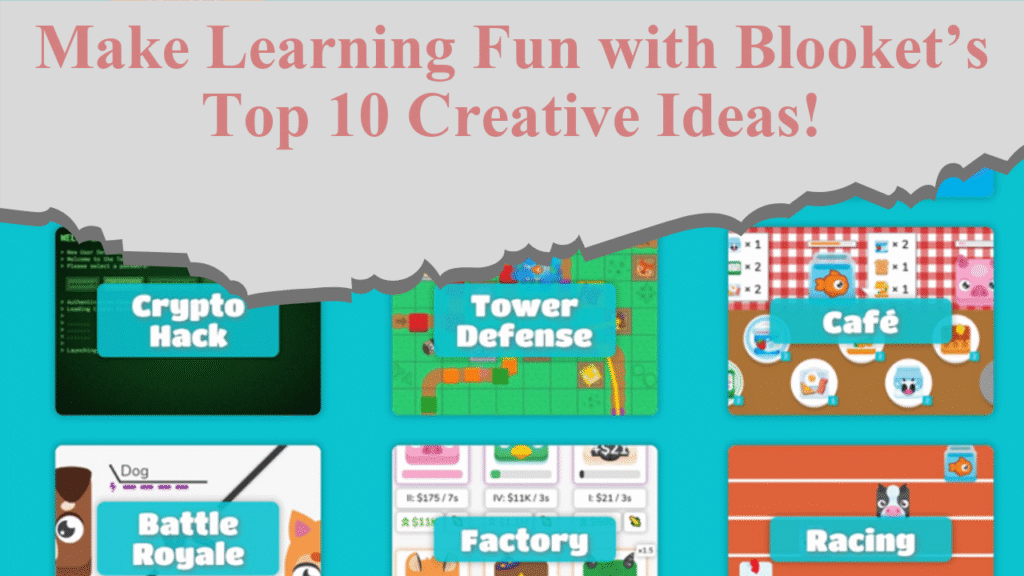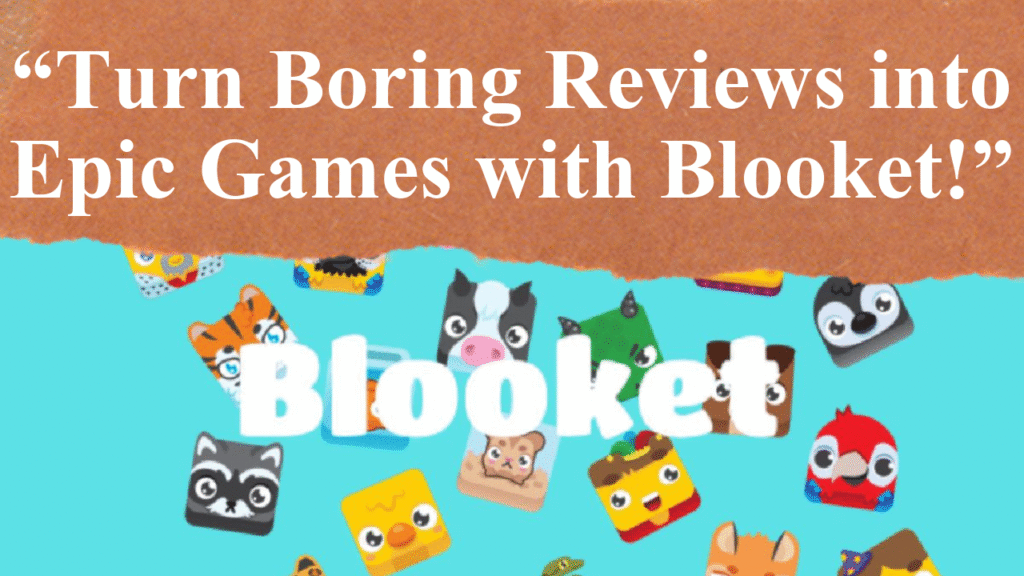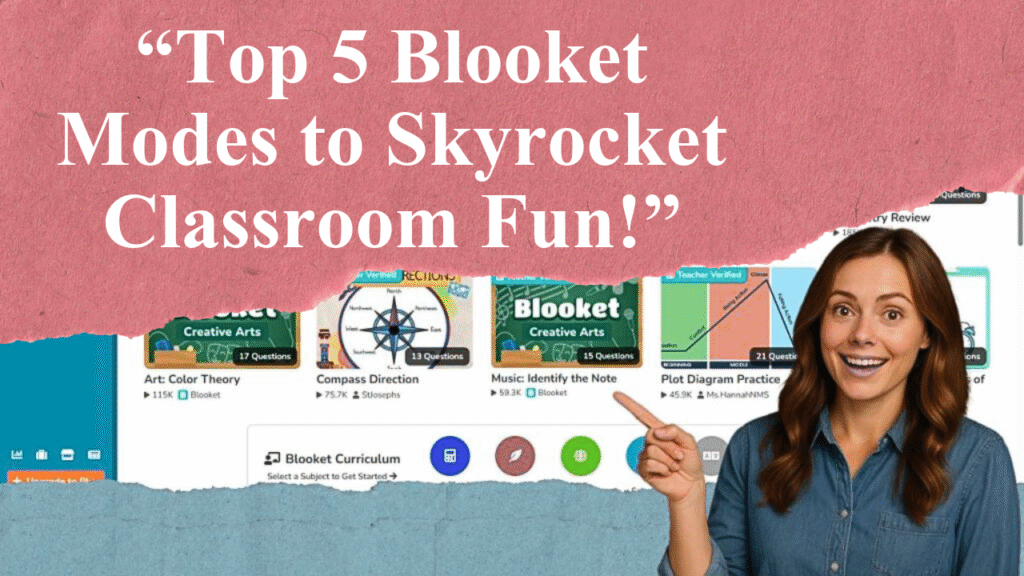“Blooket’s game modes transform education by catering to diverse learning styles. From visual learners thriving in Gold Quest to kinesthetic learners excelling in Tower Defense, Blooket’s interactive platform fosters engagement, collaboration, and critical thinking. Real-time analytics empower teachers to tailor lessons, ensuring inclusive, effective learning for all students.”
How Blooket’s Game Modes Support Varied Learning Styles
Blooket, a gamified learning platform, has gained traction in classrooms worldwide for its ability to make education engaging through interactive games. By offering over 20 distinct game modes, Blooket addresses various learning styles—visual, auditory, kinesthetic, and reading/writing—ensuring students of all preferences can connect with educational content in meaningful ways. This article explores how Blooket’s game modes align with these learning styles, supported by real-time data and classroom applications.
Visual Learners: Immersive and Colorful Gameplay
Visual learners, who process information best through images and spatial understanding, find Blooket’s vibrant game modes particularly engaging. Modes like Gold Quest and Crypto Hack feature colorful graphics, leaderboards, and avatars called “Blooks,” which visually represent progress. In Gold Quest, students answer questions to collect gold, with dynamic visuals showing their earnings and competitive standing. A 2023 Medium article noted that Blooket’s visual elements enhance retention, as students associate concepts with vivid imagery. For example, a history teacher might use Gold Quest to quiz students on historical events, with each correct answer visually rewarded with gold, reinforcing memory through visual cues. The platform’s customizable themes allow teachers to tailor visuals to specific subjects, making abstract concepts like algebraic equations or historical timelines more tangible for visual learners.
Auditory Learners: Collaborative and Discussion-Based Modes
Auditory learners thrive on sound and verbal interaction. Blooket’s Classic Mode and Team Mode facilitate group discussions and verbal feedback, ideal for these students. In Classic Mode, teachers can host live quizzes where students discuss answers aloud before selecting options, fostering verbal engagement. A 2024 Reddit thread on r/teaching highlighted how Classic Mode encourages class-wide discussions, with teachers pausing to explain correct answers, benefiting auditory learners who absorb information through dialogue. For instance, in a language arts class, students might discuss vocabulary definitions in teams during Team Mode, reinforcing comprehension through verbal repetition. Blooket’s real-time feedback, such as immediate correct/incorrect audio cues, further supports auditory learners by providing instant verbal reinforcement.
Kinesthetic Learners: Strategy and Interaction in Action
Kinesthetic learners, who learn best through hands-on activities, excel in Blooket’s strategy-based modes like Tower Defense and Monster Brawl. These modes require students to actively strategize, such as building defenses or navigating maps, while answering questions. A 2025 Teachfloor article emphasized that Tower Defense promotes critical thinking and problem-solving, as students must balance answering questions with tactical gameplay decisions. In a science class, for example, students might answer questions about ecosystems to earn resources for building virtual towers, physically engaging with the content through clicks and drags. The tactile nature of these modes keeps kinesthetic learners focused, as they interact directly with the game environment, making learning feel like an active, dynamic process.
Reading/Writing Learners: Focused Study and Reflection
Reading/writing learners prefer text-based input and output. Blooket’s Study Mode is tailored for these students, presenting questions in a flashcard-style format for self-paced review. According to Blooket’s official help page, Study Mode allows students to read questions and answers at their own pace, with immediate feedback to reinforce learning. This mode is ideal for subjects like literature or social studies, where students can read detailed questions about novels or historical documents and write mental responses before selecting answers. Teachers can also create text-heavy question sets with explanations, encouraging students to process information through reading and reflection. A 2024 article from Tech & Learning noted that Study Mode supports independent learning, allowing reading/writing learners to engage deeply with content without the pressure of competitive gameplay.
Collaborative Learning: Building Social Skills Across Styles
Blooket’s multiplayer modes, such as Blook Rush and Battle Royale, foster collaboration, benefiting students across all learning styles. In Blook Rush, teams answer questions to attack or defend, requiring communication and strategy. A 2023 Medium article highlighted how these modes promote teamwork, as students discuss strategies and share knowledge. For example, in a math class, students might collaborate in Battle Royale to solve algebraic problems, combining visual (leaderboards), auditory (team discussions), and kinesthetic (strategic choices) elements. This collaborative approach ensures that even students with mixed learning styles find engagement points, while also developing social skills like communication and resilience.
Data-Driven Personalization for Teachers
Blooket’s analytics provide teachers with real-time data on student performance, enabling personalized instruction. A 2025 Enozom article noted that teachers can track which questions students struggle with, allowing them to adjust lessons for specific learning styles. For instance, if analytics show visual learners struggling with text-heavy questions, teachers can switch to a visually rich mode like Cafe Mode. This data-driven approach ensures that Blooket remains inclusive, addressing gaps in understanding and tailoring content to diverse needs.
Adapting to Diverse Classroom Needs
Blooket’s versatility extends to its ability to support hybrid and remote learning environments. A 2023 Games4esl article highlighted its accessibility across devices, making it ideal for both in-class and at-home learning. Teachers can assign modes like Cafe Mode for self-paced homework or Classic Mode for live sessions, ensuring all students, regardless of learning style, remain engaged. For example, a biology teacher might use Tower of Doom for in-class kinesthetic learners while assigning Study Mode for remote reading/writing learners, creating a balanced approach.
Disclaimer: This article is based on recent reports, educational insights, and platform data from Blooket and related sources. Information reflects trends and features available as of July 2025. Always verify platform updates and consult educators for specific classroom applications.




